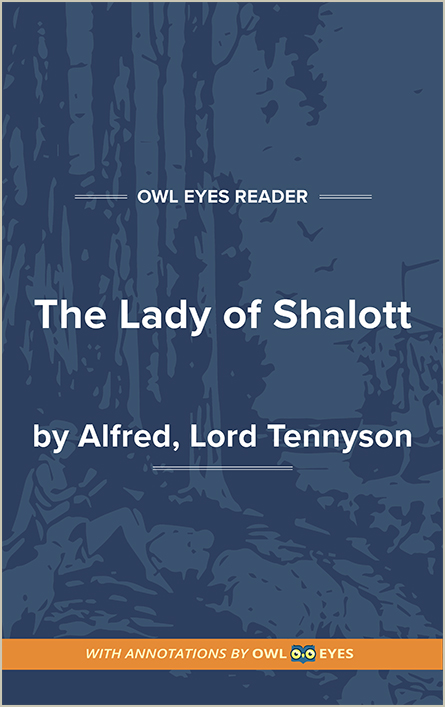Analysis Pages
Symbols in The Lady of Shalott
Camelot and Shalott: The repeated refrains of “Camelot” and “Shalott” serve to centralize the two locations and establish them as opposing symbols. The first section characterizes Camelot as a hub of activity, filled with life and the freedom to come and go. By contrast, Shalott is a “silent isle” that houses a lone woman in a tower, unknown to all. The Lady is inextricably linked with Shalott, her title being the only name Tennyson provides. Lancelot is linked with Camelot, because he is an Arthurian knight and because he is traveling to it. Lancelot’s relative freedom to come and go as he pleases contrasts with the Lady, who is stuck in her tower and unable to exercise the same freedom. In these ways, Shalott and Camelot represent the different roles of men and women in Victorian society.
The River: The river is a prevalent image in the poem, symbolizing the flow of life. The river runs alongside the tower at Shalott, ferrying people to and from Camelot. It facilitates movement and interaction as people go about their lives, contrasting with the stagnance and stillness of the Lady in her isolated tower. When the Lady finally leaves the tower, she re-enters the flow of life and time, an action which immediately results in her death.
The Web and the Mirror: Two of the most important artifacts in the poem are the Lady’s web and mirror. They serve to characterize her as both an artist and as someone touched by the supernatural. Her web is symbolic of her artistry as she depicts through her weaving the sights she sees in her mirror, which symbolizes the necessity of distance in the nurturing of the artistic soul. The mirror allows her to create reflections of the world without having to taint the purity of her artistic vision with outside influences. When the curse is activated and her weaving flies off the loom and her mirror breaks, the implication is that her artistry was linked with her isolation. Now that she has chosen to trade in her art for reality, she is estranged from her artistic spirit and her weaving abandons her.
Symbols Examples in The Lady of Shalott:
Text of the Poem
🔒"The broad stream in his banks complaining,..." See in text (Text of the Poem)
"Dead-pale..." See in text (Text of the Poem)
"She loosed the chain, and down she lay;..." See in text (Text of the Poem)
"Camelot: ..." See in text (Text of the Poem)
"blood was frozen slowly..." See in text (Text of the Poem)
"the river eddy whirls. ..." See in text (Text of the Poem)
"Shadows of the world appear. ..." See in text (Text of the Poem)
"Shalott..." See in text (Text of the Poem)
"lilies..." See in text (Text of the Poem)
"From the bank and from the river..." See in text (Text of the Poem)

